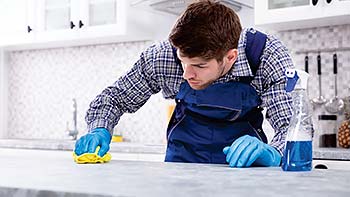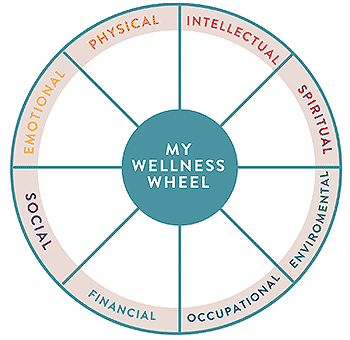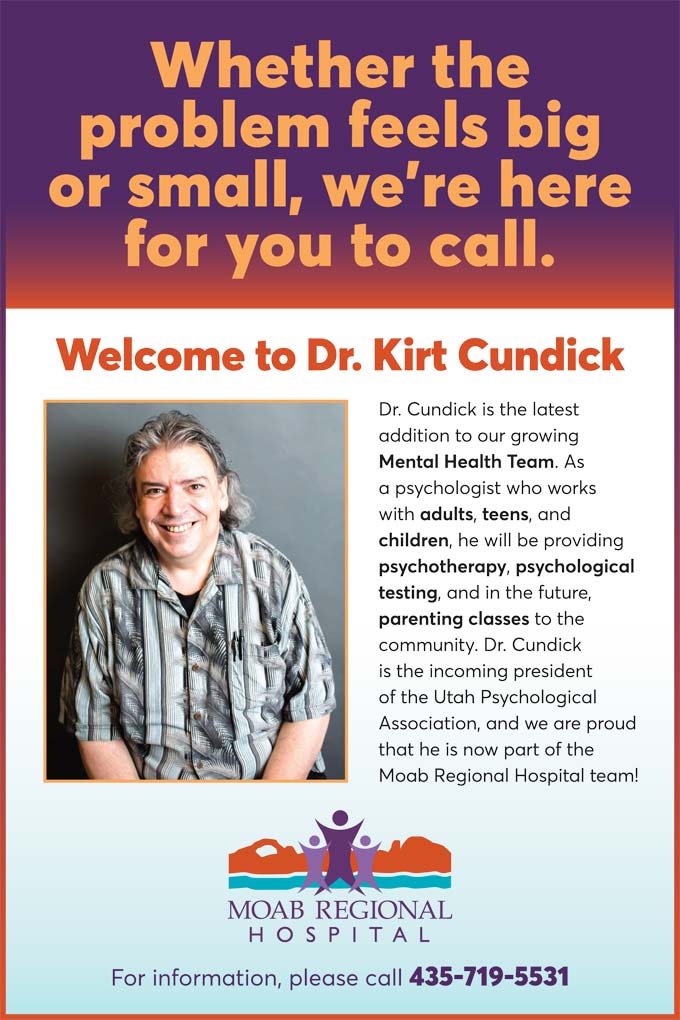|
|
HEALTHY HAPPENINGS - February 2022
|
Cleaning Tips to Keep You Healthy
by Emma Parkhurst
|
We all know it is important to clean and disinfect to reduce the risk of getting sick, but with many illnesses circulating, including the common cold, flu, RSV, hand-foot-mouth disease, and the COVID virus, now is an important time to reevaluate hygiene habits. How often do you clean and disinfect items that are used daily? Can you reinfect yourself with items such as a toothbrush or reusable water bottle? Consider this information.
Toothbrushes – According to the Centers for Disease Control and Prevention (CDC), we now know the risk of catching COVID after touching a contaminated surface, such as a door handle, is low. But what about personal items like a toothbrush – is there a risk for reinfection? Although it’s commonly recommended to replace your toothbrush after an illness due to the chance of becoming re-infected, professionals agree this isn’t typically true for viruses. After your body has fought off a virus, such as the flu or COVID, in most cases your immune system will have developed the necessary protection to prevent reinfection of that particular virus. 
With that being said, it is possible to infect others if the contaminated toothbrush comes into contact with another brush. Additionally, a toothbrush can be the cause of reinfection of a bacterial illness, such as strep throat. Since bacteria will die in the presence of oxygen, bacteria on a toothbrush that properly air dries between each use generally is not an issue for reinfection. However, bacteria can colonize if the bristles do not dry completely, which is why some professionals agree it is best practice to replace a brush after a bacterial illness. The CDC recommends against using dishwashers, microwaves, or other means to disinfect toothbrushes, as these methods may damage the brush.
Water bottles – How do you avoid reinfection from a commonly used item that travels back and forth with most people? According to Michigan State University Extension, you should wash the bottle in hot water with a teaspoon of unscented dish soap each day to reduce the risk of illness from bacterial growth. Soak the bottle in soapy water for a few minutes, rinse it well using warm water, and allow it to completely dry before the next use.
Alternatively, you can clean and sanitize bottles in the dishwasher if they are dishwasher safe. Avoid letting your water bottle sit with water left in it for long periods of time. Although COVID and the flu primarily spread through respiratory droplets from an infected person’s coughs or sneezes, experts recommend washing and sanitizing bottles after each use. Do not share a water bottle with someone who has cold-like symptoms.
General cleaning and disinfecting – To reduce the risk of infection from most illnesses, consider the following recommendations:
1. Clean regularly using a household cleaner that contains soap or detergent. Using this type of cleaner will reduce the number of germs on surfaces, which decreases the risk of infection. Areas to focus on include high-touch surfaces such as light switches, electronics, doorknobs, countertops, etc.
2. If someone in your household is ill or someone who has been in your home within the last 24 hours falls ill, it is recommended to disinfect to kill any remaining germs. Always follow the directions of the disinfectant and wash your hands immediately after use.
3. Wear a mask when cleaning areas the sick person used, and open windows and use fans to help increase airflow.
4. Remember all the usual precautions – wash your hands or use hand sanitizer when water and soap are not available, cover your nose and mouth when you sneeze or cough, avoid close contact with sick people and avoid sharing personal items with them, immunize yourself from infectious diseases, and stay home when you do not feel well.
References:
10 Things You Didn’t Know About Your Toothbrush. Retrieved from
https://www.mouthhealthy.org/en/az-topics/t/toothbrushes
Use and Handling of Toothbrushes. Retrieved from
https://www.cdc.gov/oralhealth/infectioncontrol/faqs/toothbrush-handling.html
How to Keep Your Water Bottle Germ-Free. Retrieved from
https://www.canr.msu.edu/news/how_to_keep_your_water_bottle_germ_free
Reduced Risk of Reinfection with SARS-CoV-2 After COVID-19 Vaccination — Kentucky, May–June 2021.
Retrieved from https://www.cdc.gov/mmwr/volumes/70/wr/mm7032e1.htm
Cleaning Your Home. Retrieved from
https://www.cdc.gov/coronavirus/2019-ncov/prevent-getting-sick/disinfecting-your-home.html
|
Hey, How's Your Health?
by the USU Extension Health and Wellness Team |
 We don’t mean just how much you’re eating or exercising, but all of it. We don’t mean just how much you’re eating or exercising, but all of it.
The eight dimensions of health include the following:
1. Emotional: Our ability to acknowledge and share feelings of anger, fear, sadness, or stress; hope, love, joy, and happiness in a productive manner.
2. Environmental: What surrounds you every day, where you work, live, and play.
3. Financial: Our ability to understand our financial situation and take care of it in such a way that we are prepared for financial changes.
4.Intellectual: Desire to learn new concepts, improve skills, and seek challenges in pursuit of lifelong learning.
5. Occupational: Our desire to contribute in our careers to make a positive impact on the organizations where we work and to society as a whole.
6. Physical: The ability to recognize that our behaviors have a significant impact on our wellness, and working to adopt healthy habits (routine check-ups, balanced diets, exercise) while avoiding destructive habits.
7. Social: Our ability to establish and maintain positive relationships with family, friends, and co-workers.
8. Spiritual: The ability to develop congruency between values and actions and realize a common purpose that binds creation together.
To achieve your best health, all aspects need attention. Wellness requires awareness, motivation, and action. Health is influenced by our daily choices and behaviors. Curious about your own health? Use our wellness-wheel worksheet to see where you’re at and how you can improve.
You can read more on our health and wellness website at https://extension.usu.edu/healthwellness/index.
|
Surviving COVID Burnout
by Kirt Cundick, PhD |
In a perfect world, when people—you, me, our kids, our coworkers, our clients—are functioning optimally, we’re able to balance our priorities, navigate competing imperatives, and meet daily challenges with flexibility and creativity—all while maintaining fidelity to our core values. Living this way lends our lives a sense of meaning and satisfaction.
But we don’t live in a perfect world, so occasionally we end up fumbling priorities, dropping balls, losing track of what’s important, getting irritated, and wondering why we can’t be the serene paragon of excellence we imagine we’re supposed to be. Yet despite our imperfections, despite the completely unreasonable and ridiculous curve balls life throws at us, we can still find meaning and satisfaction in our complicated lives.
We’ve all experienced crisis mode. Parents are particularly familiar with it: A catastrophe occurs and everything that is not the problem vanishes, as all our mental and physical resources are redirected to avert the danger, to stop the bleeding, to rescue the kid from the burning house. The ability to zoom-focus on an immediate hazard is a terrific adaptation, but when the crisis goes on and on, when the parameters keep changing, when our sense of dread becomes constant, we’re going to run into system overload. And here we are.
Constant, ambiguous dread leaves us simultaneously feeling like we need to do something, and robs us of any sense of what we might do first. When problems are too big, we can get stuck in decision paralysis; there are too many options, and the problem field is vast enough that we’re unable to choose the best one. As the crisis goes on unabated our brains try to maintain the level of arousal required in an emergency, but our resources become depleted. We get overwhelmed and eventually we’re left depressed and dissatisfied—burned out.
The symptoms of burnout include emotional exhaustion, cynicism about work, and reduced efficacy. When we’re burned out we might feel tired all the time, isolated, ineffective. Because we feel that we’re not living up to our own expectations we tend to be plagued by anxiety, doubt, and shame. We feel “this is not acceptable” and “this is not who I am.” This is an understandable reaction to an extreme situation.
People often have limited control over their immediate circumstances, but we get to decide how we interpret and respond to what’s happening to us. We can make conscious decisions about what we focus on. As Viktor Frankl said, “Everything can be taken from a man but one thing; the last of human freedoms—to choose one’s attitude in any set of circumstances, to choose one’s own way.” This is essential in the face of catastrophes like loss of function or chronic pain. Focusing exclusively on what we’ve lost or what we can’t do leaves us living a life filled with deficiency and incapacity. Maintaining focus on the things we can do, giving ourselves things to look forward to, finding new ways to engage in life—this perspective is essential to adapting to chronic conditions.
Acceptance doesn’t mean giving up. It means acknowledging what’s happening. Acceptance leads to detached curiosity, and we can ask: What’s happening here? How am I feeling? How is my body feeling? What am I anxious about? What am I avoiding? What are my values? What is workable and what do I need to let go of? Acceptance brings us to self-awareness, connection, and compassion for ourselves in all our messy, imperfect humanity. It allows us to make mindful decisions about how we want to respond to where we are instead of wishing we were somewhere else.
From here it can help to structure the problem—to reduce the ambiguity. We can take an inventory of what’s important to us. How much time are we focusing on the things that provide us with meaning and satisfaction? If sitting down and taking an inventory isn’t working, we might try keeping a worry log, and consistently checking-in with ourselves. Gratitude journaling is helpful, as is a more general accounting of the things that brought satisfaction that day.
We want to activate our parasympathetic nervous system. To do this, we can walk, we can get in touch with things bigger than ourselves—art, music, nature. We can meditate. Sing in the car. Use emotional grounding or mindfulness exercises. It’s good to do these at transition points, as we’re shifting roles and priorities throughout the day.
Research demonstrates the positive impact showing up for other people can have on us. Small acts are often more meaningful than grand gestures. We can tell people when we appreciate them and what they’re doing. Focus feedback on what people are doing well—more on habits and efforts, less on accomplishments. It’s best to be personal, concrete and specific about the things we’re noticing. We don’t need to be in a leadership position to do this; we all share responsibility for the culture we’re operating in. At work, or in groups, focus on superordinate goals (goals you share with others that require their cooperation to achieve them) and group identity. Maintaining a sense of shared well-being and helping people view self-care and work responsibilities as complementary, not competing, goals is essential to addressing burnout in employment settings.
Humanity will survive this, as it’s survived many other catastrophes. Hopefully we can derive meaning from our experiences now as many have before. Be kind to yourself, focus on what you’re doing well, notice and learn from missteps, but then forgive yourself for them. Take care of yourself. So you can continue to show up for other people. Because we’re all in this together.
|
Moab Regional Hospital Welcomes New
Psychologist
Kirt Cundick, PhD, Joins the
Growing Mental Health Team |
Moab Regional Hospital (MRH) is excited to welcome a new psychologist to town—Dr. Kirt Cundick. Appointments can be made to see Dr. Cundick who has joined MRH’s growing Mental Health and Recovery Services Team. Dr. Cundick spent his childhood in Provo, Utah. After receiving his BS in psychology he was accepted into the Counseling Psychology Doctoral Program, earning his Master’s on the way, all at the University of Utah. Dr. Cundick is a member of the American Psychological Association and the incoming President/Professional Education Chair of the Utah Psychological Association.
Kirt has worked with adults and teens since 1993. He considers himself a “generalist” and offers a variety of services, including psychosocial evaluations, psychotherapy, personality testing, IQ, neuropsychological and academic achievement evaluations for kids, adolescents, and adults. He has worked with clients with the full range of psychiatric diagnoses and a broad range of medical conditions. He stays networked through the various psychological associations he is a member of and is interested in the future of psychology.
Dr. Cundick said he wants to take some time to assess how he can best integrate with the Moab community and the MRH team. He co-developed an 8-week parenting class for parents with oppositional and/or defiant children that has been very popular with the parents who have completed it. He plans to start the parenting classes once COVID-19 measures allow face-to-face classes again.
A little about Dr. Cundick. He said, “I’m a fount of useless trivia.” He describes himself as a cat enthusiast, and loves his 4 rescue cats. The morning is his favorite part of the day, when he and his wife get up extra early to play word games (NYT Spelling Bee, Wordle, Crosswords). They use a competitive point system, and he wins just often enough to keep playing. He said it helps to start his day off right.
Moab Regional Hospital is a 17-bed not-for-profit Critical Access Hospital and Level IV Trauma Center located in Moab, Utah, and is the leader in healthcare in southeastern Utah. Our mission is to put our patients first, deliver quality, cost-effective healthcare, and to promote wellness to all we serve.

|
|
|
|
|
|
|
|
|
© 2002-2024 Moab Happenings. All rights
reserved.
Reproduction of information contained in this site is
expressly prohibited.
|
|